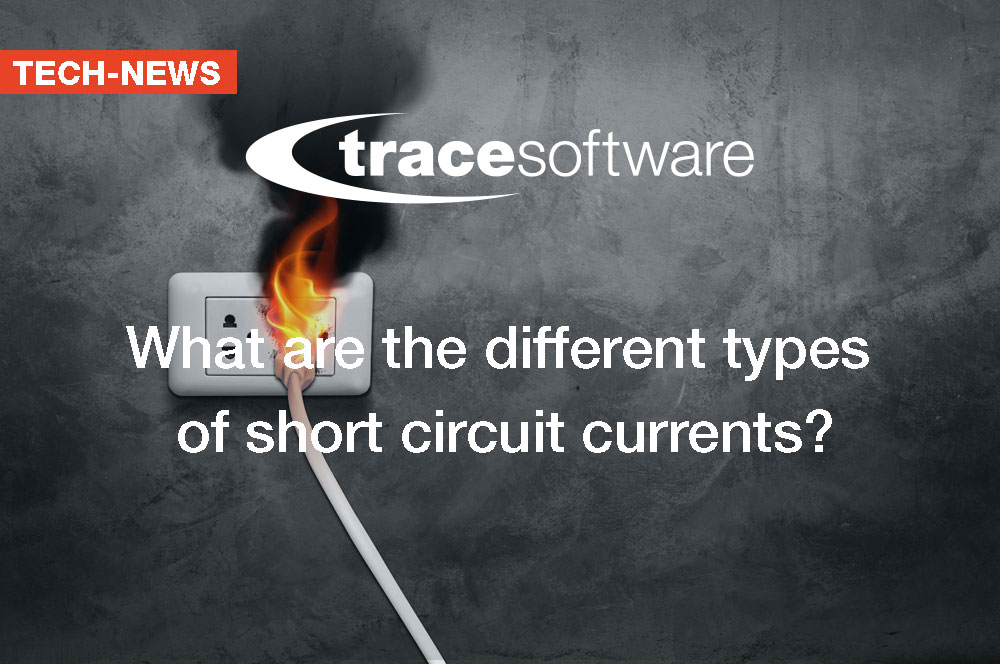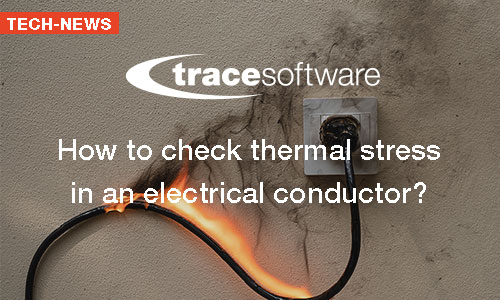What are the different types of short circuit currents?
elec calc™ can calculate different types of short-circuit. These data are relevant since, depending on installation type, earthing system and the point in which a short-circuit may happen, we do not exactly know which one of them will be the most harmful. Protections of the system, then, must be sized to operate against any kind of failure to occur.
The purpose of this article is to describe the different types of failures to better understand the calculated values:
- Ik3: Corresponds to a three-phase short-circuit. The three phases in same circuit are accidentally in contact. Typical examples that can cause this failure can be accidental falls over our cables, accidental oversights of a metallic tool over non-insulated conductors… etc. Normally it uses to be the maximum value among every type.
Three-phase short-circuit (*)
- Ik2: Bi-phase short-circuit. Two phases are accidentally in contact. Its causes can be similar to three-phase failure, although it can happen that a conductor is loosen from its fixing point and comes next to the closer one, or simply dirt between two conductors that reduces isolation. This fault type can be also combinated with bi-phase short-circuit to earth, in this case it is named IkE2E.
Bi-phase and Bi-phase to earth short-circuits (*)
- Ik1 and If: Single phase and phase to earth short-circuit. In this case, both types are joined together, a phase conductor may contact a neutral or an earth conductor. Depending on the used earthing system, calculations are done in different way. It uses to be to most probable short-circuit, and can be caused by accidental disconnections of a conductor, by dirt causing isolation loss, mice degrading cable sheath…
Phase-earth short-circuit (*)
Short-circuit current
Partial short-circuit currents in conductors and earth
To highlight the specific case of IT earthing system, the short circuit value represents a second failure short-circuit, since after first failure the current circulation is very low or almost zero (although is a failure that must be fixed as soon as possible).
The value of the short-circuit currents
Apart from the different natures of short-circuit, the values of currents are not always the same. This is due to the connection grid is constantly in variation, in terms of voltage, load level, etc., that will cause that, in case of failure, the short-circuit current will fluctuate inside a range of maximum and minimum values.
Maximum short-circuit currents
They correspond to the grid behaving with more power in the connection point, in this case the suitable short-circuit currents will have the higher values and then the damages will be more important. Then, the protections, apart from normal operation, will have to be capable to withstand these values to avoid permanent interruptions or damage in other equipment, these values define the minimum requirement for devices breaking capacity.
Minimum short-circuit currents
In these cases the grid is behaving with lower power (but inside acceptable range, obviously). Short-circuit currents will be smaller, even in some cases their order of magnitude will be comparable to the overloads. In any case, a short circuit, even of minimum value, is still an installation failure that must be fixed immediately. Protections then must operate against these kinds of failures, contrary the short-circuit effect will be spread to other installation points causing several damages.
Short circuit calculations with elec calc™
elec calc™ calculates all these kinds of short-circuits according to symmetrical components method, included in IEC-60909 standards family, applying all factors inside them as well as other particularities that other local standards may require. Every short-circuit calculation are updated in real time, while installation and components are verified for the correct sizing of protections, checking existing ones, and consideration of parameters to select the appropriate references from the multi-manufacturer catalogue.
Article written by Ricardo Martín Sobrino, Trace Software International Calculation Engineer
DO YOU WANT TO KNOW MORE?
Leave a Reply
Want to join the discussion?Feel free to contribute!







Interesting article! I hadn’t considered the different types of short circuits currents before. Thanks for the information.
Thank you for providing a clear and concise explanation of the different types of short circuit currents. As an electrical engineer, I often encounter these concepts in my work and it’s helpful to have a refresher on the different types and their definitions. Your post has helped me better understand the nuances of short circuit currents and how they can impact electrical systems. Great job!